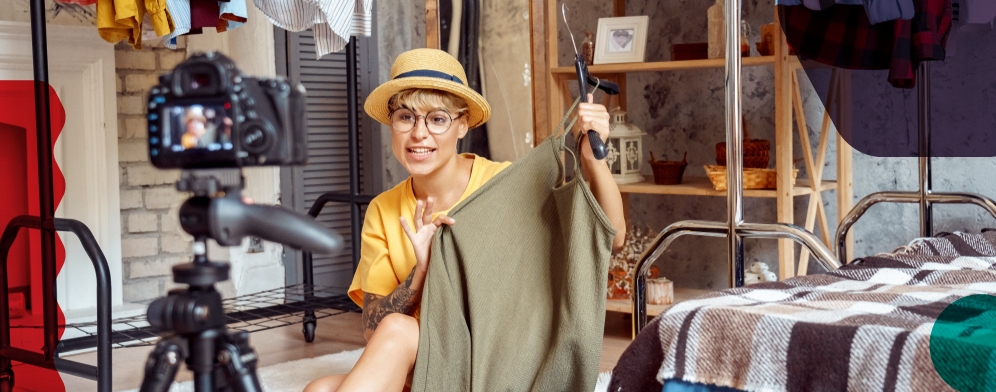Check out our tips on setting up your side hustle below.

1. Suss out your payment
If you’re working remotely, such as doing small jobs as a freelance writer or photo editor, you’ll most likely need to send out invoices to receive your payments. At the start of your journey, you may rely on mutual friends and existing connections to build up your client base and gain more traction, in which case it might seem oddly formal to send out invoices.
That said, getting into the habit of sending invoices is something you should turn into second nature as soon as possible. You can find invoice generators online that will already have the template sorted for you, then all you need to do is input your personal and financial details. Keeping track of your invoices will help you stay up-to-date on who’s already paid you and income you’re still expecting, as well as provide documentation you can fall back on if any unexpected problems crop up.
Remember that it may take a while to get your side hustle off the ground, so don’t feel disheartened if the time, effort and money you’ve put into starting it is not reflected in your earnings at first. Maintain a record of what you’re earning, budget wisely, and stay patient.
2. Plan out your workspace
If you’re working remotely for your main job as well, chances are you’ll be in the same workspace or home office. It may help your brain to switch between your two jobs if you can avoid working in the same room, or at the same desk. It can be good to have a designated ‘work’ area in your house, but try to partition the two jobs if you can. Keeping some kind of physical barrier between them might help your mind adjust to the different modes of thinking required for each role.
Your ideal side hustle might deploy more creative skills, or require a little more space. If you’re selling physical products, you’ll need a place to store them that won’t become cluttered easily, and if you’re offering a tutorial-style service, such as tutoring a foreign language, or teaching a physical skill, you’ll want a welcoming, professional environment in your workspace to invite your clients into, that doesn’t feel like they’ve simply stepped into your living room.
Keep your decor neutral and relatively plain, but add a few personal touches so it doesn’t seem too cold and clinical. This is also important if you’re planning to photograph your products, but the specifics will vary depending on what you’re selling.
3. Research your industry

With a side hustle, you’re in charge of your earnings - meaning that you’re dictating how much your work is worth. Charge too much and you might struggle to build a base of returning customers, charge too little and you won’t cover your costs and make it a worthwhile endeavor. Invest a lot of time researching the minimum, average, and competitive hourly or monthly earnings for your trade or skill so you understand how much your services or products should cost.
Weigh this up with the level of experience or quality you can provide. If you’re selling products, factor in the quality of your materials or the expertise in your manufacturing methods. People often like to buy from established brands, which may mean you need to drop the price a little until you’ve built up a stronger footing for yourself.
Does your product have any USPs (unique selling points), such as being made from entirely sustainable materials, that justify charging slightly more? If you’re selling a service, think about the portfolio you can provide your potential clients with to demonstrate the quality of your work, and whether you’d be able or willing to provide better deals for customers who’ll commit to bulk purchases, for example, ‘buy 9 lessons and get the 10th free.’ In other words, what are your personal unique selling points?
4. Create a (realistic) growth plan
Whilst you may not have big plans to turn your Etsy upcycling into a full-on reworked clothing brand (but props to you if it is), it can still help you progress to come up with goals you want to achieve, and start thinking about the steps you could take to get there. You’ll motivate yourself to stick at the project if there are goalposts you can celebrate along the way, or during quieter times where you’re receiving less work.
Don’t assume that your side hustle will take off immediately, and you won’t need to stay at your main job for more than a couple of months once you’ve got the ball rolling. Any business endeavor takes time to establish, but monitor what’s going well and where you might benefit from spending more time developing - whether it’s your marketing, your outreach or staying on top of admin.
A side hustle is supposed to be a bit of fun alongside a money-making exercise, so if you find it’s causing you more stress than the job that pays the bills, take a step back and reassess whether your plan might be too ambitious for the current timeframe.
5. Spread the word

Once your side hustle is ready to go, it’s time to market, market, market. Getting your product or service out there is going to make finding clients a lot easier. If you’re looking for voice-acting roles, send reels of your existing work to local radio marketing channels, or if you’re going to provide coaching services, why not offer free 15-minute consultations before potential clients feel locked into any purchasing decisions?
There are so many tips and tricks to promoting what you’re selling, and the key to making yourself stand out is by having a clear vision of the image you want your ‘brand’ to have. Even if you don’t yet have the funds to create a fancy-looking logo for your crochet garments, or the highest quality camera for your sponsorship videos, think about the core values of what it is you’re providing, and what makes it unique.
You can use word of mouth, create a social media account, post on Facebook with links to your website or shopping channel, or post posters with contact details. Be persistent and reward returning customers with loyalty schemes, such as a discount on their next purchase. If you’re working with a company, say doing graphic design or something outsourced, try to build a personal relationship that establishes trust and authority so they keep coming back to you.
*****
A side hustle is an exciting way to try your hand at entrepreneurship and a great avenue towards securing financial independence. Whilst challenging, it can be incredibly rewarding to learn many new skills and earn a little extra on the side.
Most people would love to be able to work for themselves, and if you’re able to spend even a little of your working hours doing that, you’re on the right track. Keep our top tips in mind when setting up your side hustle, and you’ll be sure to succeed - and have fun in the process.
 Interested in Virtual Team Building Events?
Interested in Virtual Team Building Events?





















